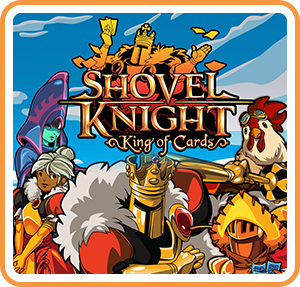Shovel Knight: King of Cards should be renamed to King of Disappointment
More stories from Kyle Basher

The Wii U was a failed console, but it walked so the Nintendo Switch could run. One of my favorite games that came out on the Nintendo Switch is Shovel Knight.
Even though the game came out nearly four years ago, it just got two new additions to its expansion: Shovel Knight: King of Cards and Shovel Knight Showdown.
The base game of Shovel Knight is a simple platformer similar to Mega Man. You play as the game’s namesake Shovel Knight and wield the shovel blade to subdue foes. As you run through stages, you find The Order of No Quarter—a band of eight knights who work for the enchantress—whom you must defeat.
The other iterations of the game follow three different knights of The Order of No Quarter, each of which change the gameplay ever so slightly. Plague Knight uses alchemy to make bombs that let him jump, and Specter Knight has the ability to ride rails and climb walls.
King Knight—the protagonist of King of Cards—is the final and newest playable character in Shovel Knight, as well as arguably the worst.
King Knight’s unique gimmick is that he can dash into anything. If a dash is successful, he spins up into the air. This dash can also be used to a second time after the first if the spin hits an enemy or another object like a lamp or bubble. Otherwise, the player must land before they can dash again.
Like its predecessor, Kind of Cards also has a world map; however, I feel that the movement on it is all too clunky and fast. The map also is slightly larger with more places to stop at. One of these spaces is where the card aspect comes in.
Completely new is the mini-game Joustus. Joustus is similar to Skylanders skystones mini-game with two players—one who is often, if not always, an A.I.—who take turns placing tiles or cards to collect gems.
The game is played on a two by two or three by three tile board with an extra row of tiles on the perimeter of the board but not the corners. The game is over when the main board is filled.
These cards can do two things. They can be placed, and they can push other cards.
To collect a gem, one must push a card of their own onto a gem. The cards have arrows that come out of their sides, so they are able to push other cards. Some have more, and some have less. With these arrows, you can set a card atop another, and it can choose which way to push the other card.
However cool Joustus is, the main gameplay of King of Cards is the stages, and they lack the charm of the other three stories. The levels are not fun to traverse, and King Knight doesn’t feel fun to move.
The heirlooms—additional weapons that cost vigor, which is a numerical limiter to how much one can use heirlooms—don’t feel as unique as in all the other games. Specter Knight has loads of unique curios—heirlooms by a different name—like the chronos coin that slows time, and Plague Knight has all his bombs that change his combat and bomb jump completely.
Shovel Knight: King of Cards is worth the $9.99 before tax I paid. Joustus alone could be sold for a higher price; however, the level gameplay when you control King Knight drops the price of the game.

After taking a gap year, Audrey is entering her second year on staff for The Central Trend. In her free time, you can find her reading, practicing music...
























































































